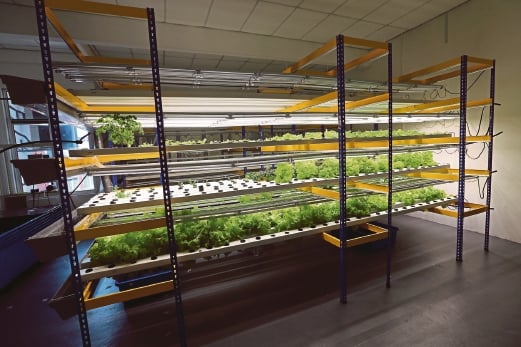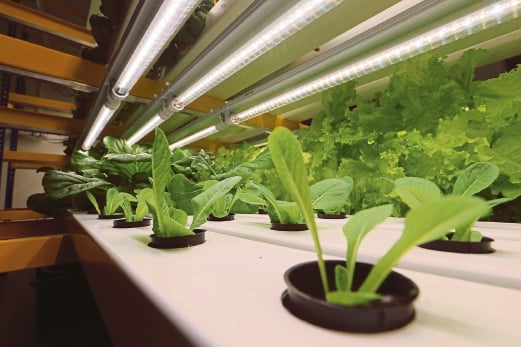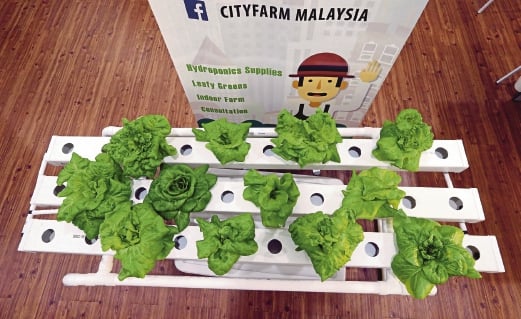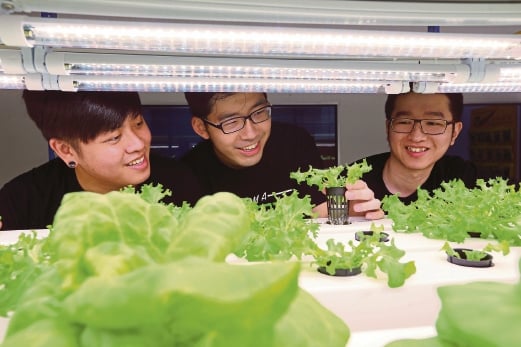CityFarm Press Release — agrotech
[e27] 57 rising Asian startups

The startup paradigm is not only changing our economies and influencing work culture, it is also increasingly transforming our daily lives. While global Entrepreneurship is at an all-time high, the interactions between regional ecosystems is still limited.
If you asked the average French startup founder to name a Chinese unicorn they probably couldn’t (although to be fair the name Didi Chuxing did filter through to US/Europe since Uber’s defeat in China) and definitely couldn’t, if you asked them the same question about Singapore. Conversely, the average Singaporean entrepreneur wouldn’t be able to name a French Unicorn (The country and the city both have 2, despite France having 12 times the population of Singapore).
While being an expert on unicorns isn’t much help to most entrepreneurs, it illustrates the underlying problem: startup ecosystems are thriving all around the globe with little or no communication between them.
We decided to take action, and are excited to announce that e27 and Startup Trackerare joining forces! From now on, e27 data can be found on Startup Tracker alongside Crunchbase, Product Hunt, and many others.
To celebrate, we put together a list of 57 startups from the 19 largest countries of the South and East of Asia you should keep an eye on (North Korea was skipped due to lack of available data).
Malaysia
Emerging | Population ~31M

Image from f11photo / 123RF
123RF – One of the world’s largest digital stock agency
CityFarm – Hydroponic technology that allows soil-less farming in urban centers.
ServisHero – An on-demand services marketplace where you can find and hire trusted service providers for your home and office needs.
Original Article: https://e27.co/57-rising-asian-startups-20170216/
- Choon Beng Looi
- Tags: agrotech city farming cityfarm e27 hydroponics indoor garden urban farming vertical farming
[e27] 7 Asian startups putting the spotlight on agriculture

For a specie that relies on crops for a large portion of their food, humans have not really been that great at developing agriculture. The growth rates of agricultural production and crop yields have slowed the past few years, and while that may be attributed the declining food needs of a declining global population, it should also be taken into account that almost 800 million people are undernourished.
With Asia supporting the food needs of 60 percent of the global population in roughly 23 percent of the world’s agricultural land, and with volatile climate changes, land constraints due to urbanisation, and a growing population coming into play, Asia needs technology to sustain agricultural growth.
While agritech in Asia is young, it is growing, and several startups in Asia are now directing their eyes on tackling agriculture problems from sustainable crop management, increasing yield, and even financing. Here are a few startups putting agriculture in the general public’s viewfinder:
Build your own farm with Cityfarm
We bring the farm to the city
The Malaysia-based Cityfarm launched in 2016 with the aim of creating self-sustaining food supplies in the cities. The company uses Hydroponics technology, allowing soil-less farming in urban centers, and launched a 450 sq ft indoor vertical show farm with controlled environment capable of producing 2000 heads of lettuce monthly. Cityfarm distributes kits and supplies for indoor farming as well as offers courses for beginners
Original Article: https://e27.co/7-agritech-startups-asia/
- Choon Beng Looi
- Tags: agrotech city farming cityfarm hydroponics indoor garden urban farming vertical farming
- Choon Beng Looi
- Tags: agrotech AiFM city farming cityfarm hydroponics indoor garden urban farming vertical farming 爱FM
[Focus Malaysia] Farms in the city
News feature from #FocusMalaysia!
We will work very hard to spread the goodness of#urbanfarming to the entire Malaysia!

- Choon Beng Looi
- Tags: agrotech city farming cityfarm Focus Malaysia hydroponics indoor garden urban farming vertical farming
[New Straits Times] CityFarm is helping 'farms' grow in urban homes

CityFarm Malaysia ventures into indoor farming to inspire more urbanites to grow their own food, writes Zuliantie Dzul
“I AM a city farmer,” read the words in white and striking green on the black T-shirt worn by the youth who greets me at the door of the second-floor office in Sri Kembangan, Selangor.
Walking in, I spot brown boxes of fertilisers neatly placed on the shelf across the door. Stacks of PVC pipes are on the concrete floor next to the shelf. The air inside is a little stuffy as the office had just recently opened for business.
The young man introduces himself as Jayden Koay, one of the founders of CityFarm Malaysia, a newly-founded organisation with the objective to inspire more people to become city farmers with the ability to grow locally from anywhere for a more sustainable future of food production. CityFarm Malaysia serves as a one-stop-centre to kick start your farming journey, supplying parts such as piping and products such as fertiliser and germination sponge.
The sight of vegetables behind a closed wooden door and a glass panel catches my eyes. The affable Koay takes me inside the room, a vertical farm of lettuce, where slabs of leafy greens of different stages — from seedlings to ready-to-harvest — take up most of the 42sq m space. After a quick tour of the “farm”, we return to the office where we’re soon joined by Looi Choon Beng and Johanson Chew, the other co-founders of CityFarm Malaysia.

HYDROPONIC IS BACK
The United Nation predicts that the world’s population will grow to 9.6 billion by 2050. 70 per cent of people will live in the cities and 70 per cent more food will be required to feed them. Yet, 80 per cent of cultivated land is already in use. Moreover, extreme weather patterns and devastated crops will create higher food prices, and consumers will become more conscious of how their foods are produced.
As the population rises, more cities will be developed. In the long run, we can no longer depend on food supplies from outside. And it is this very knowledge that drives the team of five to venture into indoor farming to cater to the rapid growth in consumer demand for affordable, high-quality, locally produced crop in any climate.
“We need sustainable supply. There won’t be enough land,” begins Koay.
Hydroponic is one of the basic farming methods which took the country by storm decades ago. Progression of hydroponic technology makes soilless farming possible within the urban household and this is the key to address food supply issue, where everyone can be a city farmer and part of the food supply process. “Soon after that, many other methods were engineered,” adds Koay.
For example, the farmers in Cameron Highlands are using the nutrient film technique, wherein a very shallow stream of water containing all the dissolved nutrients required for plant growth is re-circulated past the bare roots of plants in a watertight gully, also known as channels. There’s also the technology to replace sunlight with LED lights so your farm can be cultivated indoors.
Farming within the city can help reduce carbon foot print where transportation can be optimised. “The vegetables we buy from the markets travel about 300km to reach consumers in the city. The travelling produces carbon dioxide and petrol is needed to transport the fresh produces. What we do here is indoors and in the city. It’s already close to consumers,” explains Koay.

CITY FARM MADE POSSIBLE
Urban farming isn’t really an alien concept. It’s fast growing in popularity around the world. Across the Causeway, our neighbour Singapore has its own campaign. The scarcity of land in the city has prompted the Edible Garden City to promote the Grow Your Own Food movement. The hope is that — as stated in their website — people would grow edibles on all the under-utilised spaces such as rooftops and sidewalks.
“We do foodscaping. Our gardens work doubly hard to be both productive and pretty. We use herbs, vegetables and fruit trees to create a landscape that you can munch on.”
In addition, Edible Garden City supplies fresh produce and conducts workshops on farming-related topics. While focusing on the community, the company also seeds the knowledge of food growing in schools. “We believe that children are more likely to eat the greens that they grow,” it states.
The awareness of urban farming in the country, however, remains relatively low. This is why CityFarm Malaysia aims to play a part in the movement by creating simple and affordable farming system in cities.
“Our farming method is suitable for high rise buildings, with small balconies. We can customise the design for you, whether you want it on your balcony or mount it on your wall,” shares Koay.
The City Balcony Hydroponic set with a dimension of 1.5m by 60cm by 60cm is a simple and easy to use PVC system which includes 20 or 30 plants capacity, nutrient tank, nutrient pump, fittings and net pots. It’s suitable for city growers as it doesn’t require frequent supervision. It’s also affordable.
“Based on our climate, you can breed local vegetables and will have no problem growing them here. You can have lettuce, kale, choy sum, pak choy and herbs,” says Koay.
If you live in a small apartment with just one window, the City Window Farm is the best setup for growing vegetables.
Koay says: “City Window Farm is a basic hydroponic starter pack, all in one box. You can master that first. Just put near your window.”
“Don’t worry, it comes with a manual,” Looi chips in.
Besides providing farming equipment, the team also organises classes, training, exhibitions and talks in public and in schools. So far, they have visited three schools in the Klang Valley. “We want to teach students about urban farming so when they go home, they can share their knowledge with their parents,” explains Koay.

THE A-TEAM
The self-taught trio and two others behind the set-up are graduates of the Multimedia University in Cyberjaya. It was through clubs and student activities that they met as they were all on different programmes.
“It all started as a hobby about two years ago,” shares 28-year-old Chew, who’s a freelance software engineer. “I saw this urban farming concept on TV. It’s big in the US and Europe, and I was interested. So I bought a plant and put it in a small corner in Malaysian Global Innovation & Creativity Centre, where he worked. Soon after that, Koay decided to join as well.”
Discussions followed soon after and eventually, the idea became a reality and CityFarm Malaysia was born.
IT management consultant Looi says: “I want to be able to do something impactful but also something that can still feed my family.”
Koay, 27, from Terengganu, concurs: “Yes, we need to do something influential and make a difference. I was in the Oil & Gas industry before but I resigned to do this. But I still have a few other businesses.”
Their green hearts don’t just stop at CityFarm. They also practice green living as well. Looi and Koay confide that they use less plastic bags and polystyrene now while Chew plans to get an electric car for himself.
So what’s next?
Education. According to the team, they want to train the next generation on the importance of farming and how we can play a part to make the world a better place by growing food that is healthy, clean and fresh.
Koay concludes: “We want to start ahead and now it’s the time. There are only five of us and we can’t possibly reach the whole country by ourselves. Everyone should play a part for this kind of effort.”

Original Article: https://www.nst.com.my/news/2016/12/197593/cityfarm-helping-farms-grow-urban-homes
- Choon Beng Looi
- Tags: agrotech city farming cityfarm hydroponics indoor garden organic farm urban farming vertical farming

